Practice Transformation
Practice Transformation programs assist primary care providers with optimizing practice workflows and systems by focusing on quality of care, cost reduction, patient engagement in care plan development, electronic communications, patient and provider satisfaction, and preparation for value-based payment.
Through value-based payment, practices are reimbursed based on the value, rather than quantity, of care they provide. Value is measured by patient outcomes and satisfaction, and cost of care.
With funding from the Centers for Medicare and Medicaid Services and the New York State Department of Health, NYC REACH provides free technical assistance to health care sites participating in Practice Transformation programs.
TELEHEALTH
Telehealth support is available to members and non-members during the COVID-19 emergency.
- Download our guide to billing and coding for telehealth services during the COVID-19 emergency.
- Use this Excel template to keep track of all changing requirements and reimbursements across insurance plans.
- During the federal Public Health Emergency (PHE) NYC REACH provided telehealth education in our Telehealth During the Public Emergency series. While the federal PHE ended on May 11, 2023, the key concepts are still accurate. To watch a recording of the webinar, or download a PDF of the slides, click on the link below.
Please note that different payers may have different definitions and reimbursement rates for telehealth, telemedicine, and telephonic services. Check with payers to ensure you are following their definition.
Telehealth is typically used as the umbrella term for all remote visits – both audio and video or audio only. Some payers define telehealth as requiring both audio and video. Medicare defines telehealth as a service that requires the provider to “use an interactive audio and video telecommunications system that permits real-time communication between the distant site and the patient at home.” Audio and video or audio only (depending on the payer’s definition) are required.
> Read more.
Medicaid uses the term telemedicine to describe “two-way electronic audio-visual communications to deliver clinical health care services to a patient at an originating site by a telehealth provider.”Audio and video are required.
> Read more.
Telephonic services are delivered strictly over the phone. No video application is required.
Medicare and Medicaid will reimburse both audio-video encounters and strictly telephonic encounters. Audio-video services will be reimbursed at a rate close to or equal to the in-person visit rate. Telephonic services will likely be reimbursed at a lower rate. Commercial plans will vary – check with your payer for more information.
Practices are recommended to incorporate video visits into their operations. It is required to use HIPAA-compliant tools for future use. Contact your EHR vendor to find out if you can perform telehealth visits through your EHR.
Contact nycreach@health.nyc.gov with any questions.
Quality Payment Program
The release of the Medicare Access and CHIP Reauthorization Act of 2015 (MACRA) led to the implementation of a new, unified payment framework called the Quality Payment Program (QPP). QPP is administered by the Centers for Medicare and Medicaid Services (CMS).
QPP offers two participation tracks: The Merit-Based Incentive Payment System (MIPS) and Advanced Alternative Payment Models (APMs). Eligible clinicians can enter their 10-digit National Provider Identifier (NPI) number in the QPP Participation Status tool to view their QPP participation status. Click here to access the tool.
MIPS allows eligible clinicians to earn a performance-based payment adjustment to their Medicare payments. It is a combination of three previous quality-based reporting incentive programs – Physician Quality Reporting System (PQRS), the Value-Based Modifier (VM), and Medicare EHR Incentive Program.
Eligible clinicians have the flexibility to choose measures and activities through four categories that are relevant to the type of care they provide:
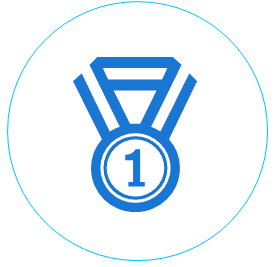 |
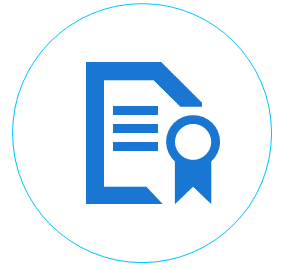 |
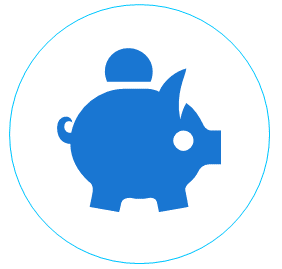 |
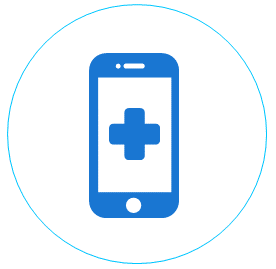 |
| Quality | Improvement Activities | Cost | Promoting Interoperability |
Eligible clinicians must submit data in the Promoting Interoperability and Improvement Activities categories for 90 days or more; and submit data in the Cost and Quality categories for 12 months. Eligible clinicians who do not participate in MIPS in the 2019 performance year will receive a negative 7% Medicare Part B payment adjustment in 2021. Eligible clinicians who do participate can receive up to a 7% positive adjustment.
MIPS Eligibility
Clinicians who are eligible to participate in MIPS include:
- Physical therapists
- Occupational therapists
- Clinical psychologists
- Qualified speech-language pathologists
- Qualified audiologists
- Registered dietitians or nutrition professionals
- Physicians (MD, DO, DPM, OD, DCM)
- Dentists (DDS, DMD)
- Physician assistants (PA)
- Nurse practitioners (NP)
- Clinical nurse specialists
- Certified registered nurse anesthetists
These clinicians must have billed more than $90,000 in Medicare Part B allowable charges and provided care for more than 200 Medicare Part B unique patients in a year.
Note: Community Health Centers (CHCs) providers that do not bill Medicare Part B are not required to participate in MIPS. However, they can voluntarily submit data if they are interested in receiving performance feedback from CMS. CHCs that do bill Medicare Part B and meet the eligibility criteria are required to report for MIPS.
PARTICIPATION TIMELINE
Each performance year runs from January 1st to December 31st. Eligible clinicians submit performance data in March of the following year.
A clinician’s level of participation in any performance year determines their Medicare Part B payment adjustment two years later.
Example timeline:
January 2019 – December 2019
Clinician participates in MIPS Activities
January 2020 – March 2020
Clinician submits performance data
March 2020 – July 2020
CMS analyzes performance data, determines payment adjustment, notifies clinician
2021
Clinician receives payment adjustment
Deadlines for data submission are subject to change. NYC REACH notifies members of all deadline updates.
RESOURCES
Fact sheets are available to help eligible clinicians better understand program participation for performance year 2019.
MIPS 2019 Performance Categories:
- Cost (15% of final score)
- Improvement Activities (15% of final score)
- Quality (45% of final score)
- Promoting Interoperability (25% of final score)
An Alternative Payment Model (APM) is a payment approach, developed in partnership with the clinician community, that provides added incentives to clinicians who deliver high-quality and cost-efficient care. APMs can apply to a specific clinical condition or population.
Advanced APMs are a subset of APMs that let participants earn more incentives by taking on some risk tied to patients’ outcomes. In order to qualify for an incentive payment, a participating clinician must receive a certain percentage of payments for covered professional services or see a certain percentage of patients through the Advanced APM during the respective performance year.
Eligible clinicians who participate in Advanced APMs can receive incentive payments from 2019 through 2024 and are exempt from any reporting requirements and payment adjustments tied to MIPS.
Eligible clinicians who participate in an Advanced APM in performance year 2019 will earn a five percent incentive payment in 2021 if they 1) receive 50 percent of their Medicare Part B payments through an Advanced APM or 2) see 35 percent of their Medicare patients through an Advanced APM entity.
Advanced APMs Eligibility
Eligibility for Advanced APMs is based on the available models applicable to a clinician’s region and scope of practice. In performance year 2018, the following models are Advanced APMs:
- Bundled Payments for Care Improvement Advanced Model (BPCI Advanced)
- Comprehensive ESRD Care (CEC) Model
- Comprehensive Primary Care Plus (CPC+)
- Medicare Accountable Care Organization (ACO) Track 1+ Model
- Next Generation ACO Model
- Shared Savings Program – Track 2
- Shared Savings Program – Track 3
- Oncology Care Model (OCM) – Two-Sided Risk
- Comprehensive Care for Joint Replacement (CJR) Payment Model (Track 1- CEHRT)
Clinicians who are eligible to participate in Advanced APMs include:
- Physical therapists
- Occupational therapists
- Clinical psychologists
- Qualified speech-language pathologists
- Qualified audiologists
- Registered dietitians or nutrition professionals
- Physicians (MD, DO, DPM, OD, DCM)
- Dentists (DDS, DMD)
- Physician assistants (PA)
- Nurse practitioners (NP)
- Clinical nurse specialist
- Certified registered nurse anesthetist
Please visit https://qpp.cms.gov/learn/apms for more information on Advanced APMs.
Participation Timeline
Each performance year runs from January 1st to December 31st. Eligible clinicians submit performance data in March of the following year.
Example timeline:
January 2018 – December 2018
Clinician participates in Advanced APM
March 2019 – July 2019
CMS determines eligibility for incentive payment, notifies clinician
2020
Eligible clinician receives/does not receive incentive payment
Deadlines for data submission are subject to change. NYC REACH notifies members of all deadline updates.
Resources
NYC REACH has developed resources that provide additional information on QPP for all NYC REACH member practices. Please visit the resource library to access these resources.
Not a member? Contact us today to learn more about NYC REACH membership.
New York State Patient-Centered Medical Home
WHAT IS NEW YORK STATE PATIENT-CENTERED MEDICAL HOME?
The patient-centered medical home (PCMH) model supports primary care practices with providing patient-centric care, improving quality outcomes, and performing well under value-based care arrangements. New York State Department of Health (NYS DOH) has partnered with the National Committee on Quality Assurance (NCQA) to create New York State Patient-Centered Medical Home (NYS PCMH), a PCMH program designed specifically for New York State providers.
NYS PCMH promotes the Quadruple Aim: a healthcare framework focused on improving patient experience, care team well-being, population health, and reducing the cost of care.
WHY SHOULD I PARTICIPATE?
- Effective population health management is required for successful performance under value-based care. Practices that join NYS PCMH strengthen their population health capabilities by:
- Coordinating with specialists
- Connecting patients with community resources
- Using population information to deliver evidence-based and culturally appropriate care
- Providing whole-patient care including physical health, behavioral health, and social determinants of health
- NYS PCMH simplifies practice workflows by aligning its program measures with other federal and state programs and insurance plans. This reduces time spent on administrative tasks associated with other programs.
- Practices that implement NYS PCMH activities improve their performance under value-based care arrangements.
- Practices that join NYS PCMH improve performance in programs such as Meaningful Use, the Quality Payment Program’s Merit-Based Incentive Payment System, and qualified entity incentive programs.
NYS PCMH-recognized practices receive a per-member-per-month (PMPM) care management payment for all services provided to Medicaid patients. Effective 7/1/2018, the amount of these PMPM payments is:
| Medicaid | NCQA PCMH 2017 / NYS PCMH Standards |
|---|---|
| MMC Per Member Per Month | $6.00 |
| FFS – Article 28 Clinic/FQHC Per Visit | $25.25 |
| FFS – Office-based Provider Per Visit | $29.00 |
For more information about PCMH, check out our Resource Library or email pcmh@health.nyc.gov
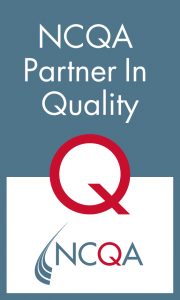
TRANSFORMING CLINICAL PRACTICE INITIATIVE
From 2016 to 2019, the Centers for Medicare & Medicaid Services (CMS) invested in local organizations to provide practice transformation support through the Transforming Clinical Practice Initiative (TCPI). TCPI organized participating clinicians into Practice Transformation Networks (PTNs), peer-based learning networks to support the practice transformation process for success in value-based payment models.
NYC REACH facilitated participation in the Greater New York City PTN and the New York State PTN. In collaboration with the PTNs, NYC REACH worked with Federally Qualified Health Centers, hospital outpatient departments and ambulatory clinics, independent primary care practices and behavioral health agencies. Through this initiative, over 900 clinicians received support to maximize practice revenue, optimize patient care and care coordination, and share best practices.
NYC REACH continues to provide practice transformation support under other programs. Contact us to learn more.
In response to the COVID-19 emergency, multiple entities are offering financial aid and relief to health care providers. Click here to learn more.

